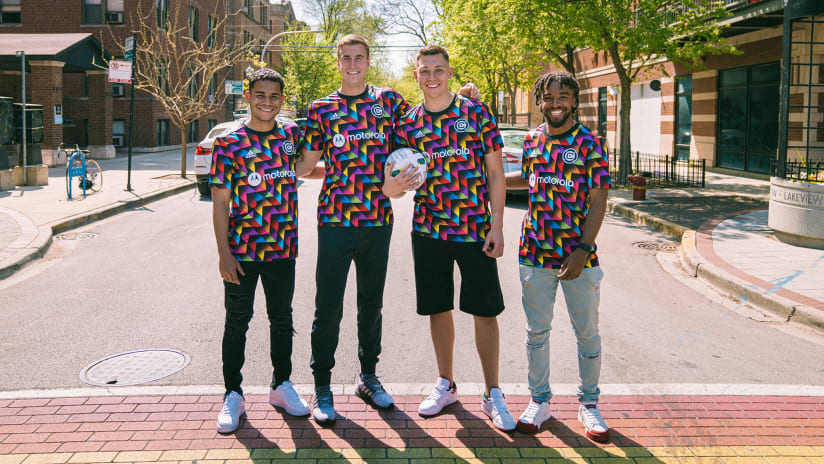In 2020, the Chicago Fire denounced racism, prejudice, and violence and pledged to actively combat inequality, hate, and oppression in all its forms. We acknowledged that words are not enough, and that action was essential. We need to do more. And we are. On February 24, 2021, Chicago Fire partnered with Common Goal’s Anti-Racist Project, which is an action-based approach to tackling systematic racism in football and society. In October 2021, Chicago Fire’s executive staff, including President Glassman Chrein, completed ARP’s six-week anti-racist executive staff training.
In January 2022, Fire added Evan Whitfield as the Club’s first Vice President of Equity, Alumni Relations, and Engagement. Adding a DEI Executive ensures the Club incorporates diversity, equity, and inclusion into our comprehensive strategic plan and practices moving forward. In April 2022, Fire participated in Play Proud to create safe and inclusive spaces for LGBTQ+ youth, staff, employees, players, and fans. 8 professional clubs, across 3 countries from 5 different leagues, completed the first 50 hours, of a 100-hour program to fight discrimination and create a welcoming environment within our Club and the wider community. Our social justice initiatives, in concert with Common Goal, are part of our ongoing plan to make our Club, programs, and facilities equitable and welcoming spaces for all Chicagoans.
Many iterations of the Pride flag are flown across Chicago. We have not been intentional enough around engaging with Chicago’s LGBTQ+ communities. The permanent placement of the Progress Pride Flag on the Chicagofirefc.com navigation bar, next to our crest, communicates that Chicago Fire values the rich diversity found in our city and that ALL ARE WELCOME.
History of the Progress Pride Flag
The Pride Flag origins can be traced back to 1970’s San Francisco city Supervisor and gay rights activist Harvey Milk. Milk tasked his friend and Army veteran, Gilbert Baker, to design a symbol to represent the gay community.
The original design consisted of eight colors: hot pink represented sex; red meant life; orange was for healing; yellow for sunlight; green represented nature; turquoise stood for magic and art; indigo meant serenity; and violet represented the human spirit. Over the years, hot pink was removed for practical reasons related to production of flags and indigo was changed to royal blue.*
In 2018, Portland based designer, Daniel Quasar (xe/xem), proposed a more inclusive design honoring the origins of the original Pride Flag and added pink, white, and sky blue representing the queer and trans communities; as well as a black and brown stripes to acknowledge all the marginalized groups that have fought for LGBTQ+ rights since the riots at Stonewall in 1969^. The arrow points to the right to demonstrate forward momentum and is oriented on the left of the flag to represent that there is still work to be done.
We fly this flag proudly at Fire, demonstrating that we are a club for all. Soccer can be a force for change, and we want all Chicagoans to feel, watch, and play proud.
With humility and intention,
Evan Whitfield
VP of Equity, Alumni Relations, and Engagement

